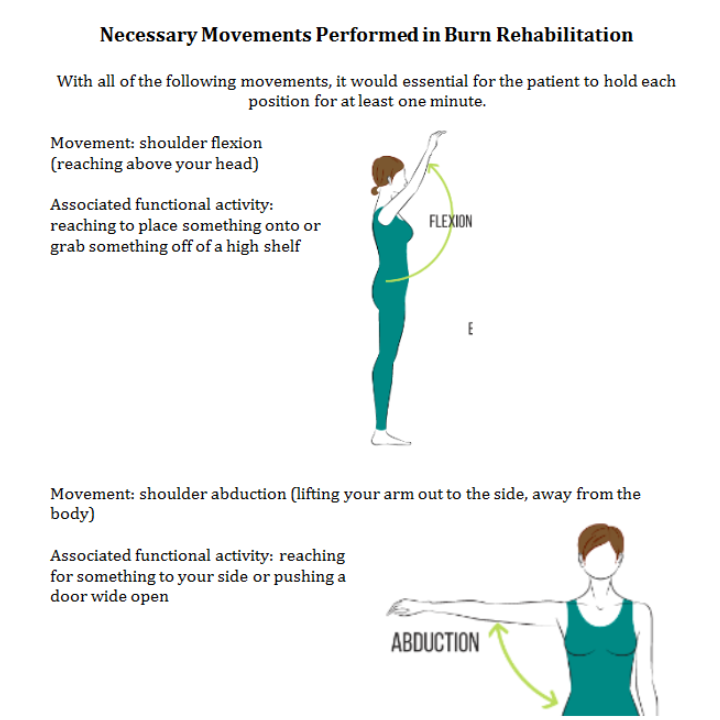I have been approached by the Associate Program Director for the School of Physical Therapy at MCPHS and have begun collaborations with a small team of graduate students researching the development of interactive media enhanced physical therapy for upper-body burn patients having one-on-one outpatient meetings with their PTs. The objective is simple — physical therapy can be less than fun and at times the participant’s understanding and expectations for progress can lead to discouragement over the course of a number of prescribed sessions. This can lead to unfinished work, lack of commitment, depression, and even extended injury. By increasing engagement and meaningful feedback, as well as encouraging a sense of agency in the PT for the participant [something interactive media can do effectively], enhanced PT could prove a valuable resource for patients and therapists alike.
Working with the team of content experts, we have researched various approaches to the problem and will start with an agile approach to development that will allow the core features of the top two or three solutions to be rapidly prototyped and tested in order to lead us toward a strong final candidate on which to focus our development efforts.
We are considering Kinect as a possible hardware system, but the tracking and immersion of a PC VR setup has become more appealing over the course of testing. Regardless, many of the initial design concepts remain compelling and approachable — these were concept documents developed in my Serious Games course in the previous semester in communication with the graduate team entity as content experts.
There was particular focus in our collaborative design goals to not only focus on immersion in order to reinforce engagement and some sense of escapism, but also to consider customization for the PT and patient users alike. Customization by the PT includes opportunities for inputting or selecting the motions/positions, creating a patient-specific set of said motions, setting times and reps for patient sessions, and selecting limbs for the example avatar [if there is one]. For the patient, customization would include colors, location/theme, and possibly music.
Some key concepts for the game framework to encompass the therapy motions include:
Music
The music could be pre-selected by the therapist from a list that would enforce a certain beat/stamina — this allows for controlled sets of targets but requires the use of copyright free music or the purchase of music.
The music could be selected by the patient based on interest and from their respective collections — this removes the need to get copyright for the music but does involve getting an add-on that creates targets based on real-time rhythm if the music/rhythm is going to be used as part of the game mechanic rather than simply a way to customize and relax the patient.
Custom Targets:
The ‘targets’ can also be captured by the therapist: aka they would set it up in session setup mode, and then while in front of the kinect or while wearing the trackers, move appropriately to form the target poses for the upcoming session or to create a bank of such poses for their patient. This saves their custom poses for use with various patients.
Custom Target Sets:
The ‘target’ poses or motions can be selected from a set of targets that are identified as stretching or utilizing pre-determined muscles, muscle groups, or whatever categorization is appropriate according to our PT experts.
Game Mechanic Examples:
- Use them with music like a DDR or BeatSaber game
- Use them with silhouettes to match — this is a common game where you want to mimic the statue for ‘points’ — silhouettes can be cute or serious
- Fit through a wall that is approaching– some semblance of urgency, but could also be funny or entertaining to some patients
- Superhot style — slow down time and dodge obstacles by getting into a suggested pose on screen — NOT bullets, but something non-stressful such as dodging snowballs, cream pies, flowers, etc.
- Etching runes with their body — i.e. The targets are parts of a visual pattern to trace, this could be runes or more common objects or incorporated into the rest of the background as say a lock or other series that needs to be completed through stretching in order to progress.
Feedback Features:
- Exaggerate the virtual reaction to their motions so they feel empowered [acting as a monster so that your arm movements can swat planes or lasers, for example].
- Big SUCCESS response for even small or daily activities such as reaching for an item off of a shelf formed as a request from a small mouse-creature.
- Trophies and integrated progress report across sessions is key to helping to place progress in a larger context and minimize set-back days.
- Pre and Post in-game test to show effects and progress of PT — and act as an Assessment for the therapist.
